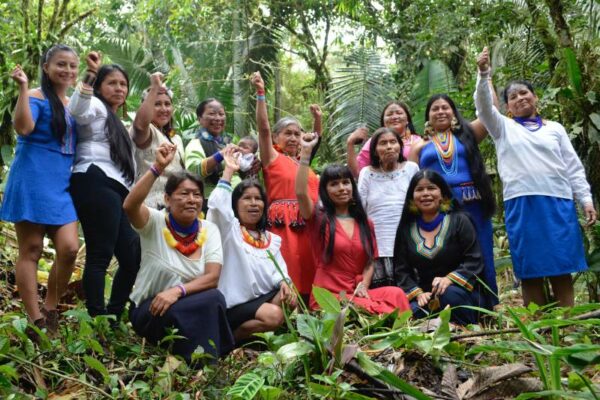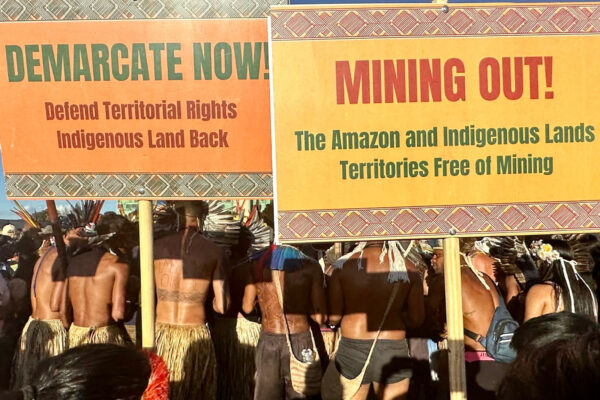On April 7th at 5:00 a.m., Ecuador’s oil pipeline, SOTE, snapped and began to leak crude directly into the Sucus-San Juan River – a feeder river for the Papallacta Lagoon. Two days later, crude was still pouring from the exposed pipeline as state oil company workers from PetroEcuador struggled to open the nearest valve to stop the flow. By then, 8-10,000 barrels of oil had entered this fragile mountain environment, covering half the lagoon with a black stain and threatening the capital city’s water supply.
From the source of the leak to the lagoon, a black scar traces the course of the Sucus-San Juan through this verdant mountainous terrain. Rocks and plants along the river’s banks are blackened to the high water mark as if someone had carefully painted them. Dead fish wash up on the shores and the placid lagoon is only disturbed by the efforts of their still living cousins to break through the sludge for oxygen. This tiny river valley is part of a protected zone where local communities are encouraged to care for the water in return for trout fishing rights. The Sucus-San Juan also winds its way between two parks: the Antisana Reserve, one of the last refuges for the Andean Condor, and the Cayambe-Coca Reserve – both parks are named for the volcanoes they contain.
The cause of the spill is disputed. The section of the pipeline that snapped lay only a metre underground in an area used as a right-of-way by the foreign-owned company building a second heavy crude pipeline known as the OCP. The OCP consortium, whose major shareholder is Canada’s EnCana (31.4% interest), denies responsibility for the accident but the owner of SOTE, PetroEcuador is certain that the constant passage of OCP heavy machinery impacted the pipe, moving it from its course and stressing the metal beyond endurance.
At stake here is more than the $1.5 million dollars for clean-up or even Quito’s water supply. The OCP has been under attack since it began construction of the new pipeline for incomplete environmental assessment, lack of appropriate consultation with affected communities along the 500 kilometres of the line, and twice failing to observe environmental regulations during construction. EnCana, considered an ‘ethical investment’ for its excellent environmental and community relations record in Canada, has come under scrutiny and criticism for its participation in the OCP consortium. Should the OCP be proven responsible, this may be another nail in the coffin of ‘ethical’ EnCana.
The new pipeline is due to open late this summer but has suffered setbacks
from civilian protest and labour problems and is $200 million over budget to date. As the grand opening approaches, new debates as to the existence of sufficient oil in the Ecuadorian Amazon to fill both pipelines and the conflict generated by continued exploration of this fragile region, are emerging. Using PetroEcuador’s most generous estimates and ignoring the claims and protests of Amazonian indigenous nations and environmentalists alike, there may be enough oil to fill both pipelines for 12-18 years. The foreign owners of the OCP have generously agreed to give the pipeline to Ecuador after 20 years. By that time, the damage will be done, much of it permanent, the oil will be gone and how many more rivers, water supplies and community livelihoods ruined.













